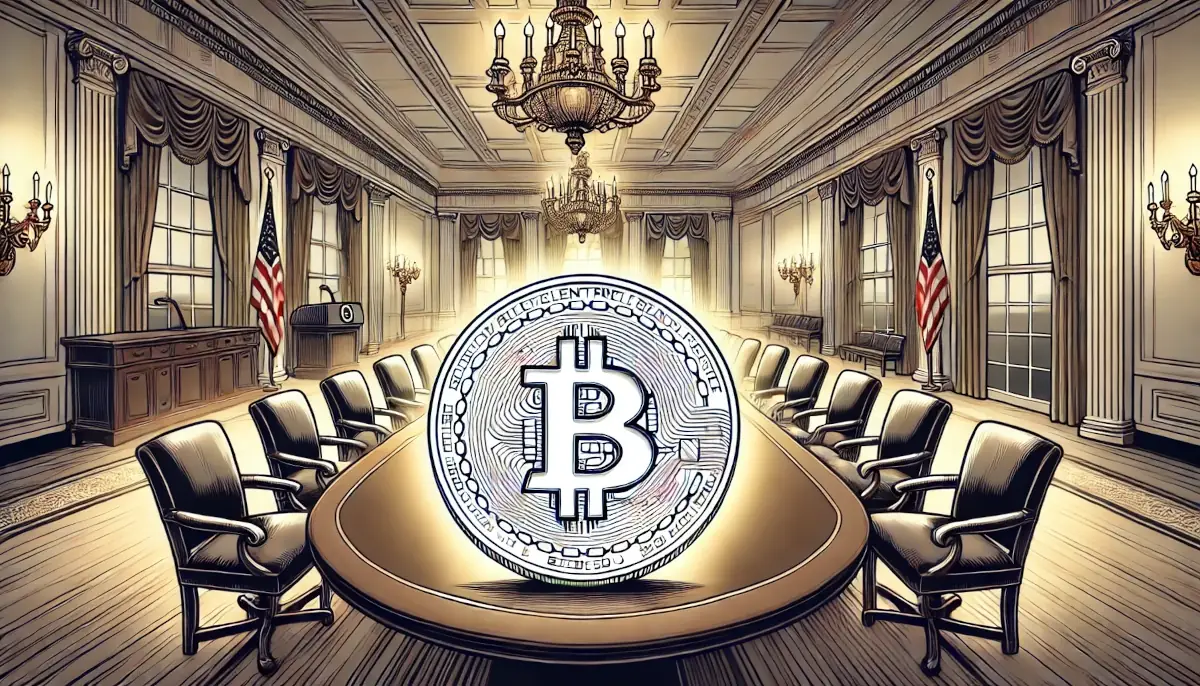The first-ever White House crypto summit was scheduled to last four hours, but the public only got about 30 minutes of livestream before it abruptly ended. It’s likely that the real conversation moved behind closed doors.
During the event, Bitcoin’s price was volatile, briefly surging to $88,500 before eventually stabilizing around $86,000.
Table of Contents
Trump’s Bitcoin Reserve: A Game Changer?
Few hours before the summit, President Donald Trump signed an executive order to create a strategic Bitcoin reserve – a move unlike anything in U.S. history. His administration confirmed that the reserve would be stocked with Bitcoin seized from criminal cases rather than purchased on the open market. Right now, that amounts to around 200,000 BTC, and no taxpayer money will be used to buy more.
“We should have never sold those Bitcoins in the past” Trump said at the event, criticizing previous administrations for offloading seized crypto. “We won’t make that mistake again.”
This marks a significant shift. In the past, the U.S. government auctioned off confiscated Bitcoin, often at a fraction of today’s prices. David Sacks estimated that these sales cost the government over $17 billion in lost value. Now, Trump is treating Bitcoin as a long-term strategic asset rather than something to liquidate. Whether this move will strengthen America’s financial position remains to be seen, but one thing is clear: Bitcoin is no longer just a speculative investment – it’s becoming part of national policy.
Lighter Regulations, Stronger Industry?
If there was one message that came across loud and clear, it was this: Trump wants to make life easier for crypto businesses.
Treasury Secretary Scott Bessent didn’t hold back, saying that the previous administration had spent years “punishing innovators” instead of working with them. Trump echoed this sentiment, promising to roll back restrictions and create a friendlier environment for crypto companies.
But will these words translate into real action? Trump wants a stablecoin bill on his desk by August, signaling that regulatory clarity for digital assets could be coming sooner than expected. The European Union has already established stablecoin regulations under MiCA (Markets in Crypto-Assets). If the U.S. doesn’t act fast, it risks falling behind.
Crypto Debanking and Operation Choke Point 2.0
One of the most heated topics at the summit was crypto debanking – the practice of banks closing accounts of crypto-related businesses, making it difficult for them to operate.
Trump accused the Biden administration of “strong-arming banks” into shutting out crypto firms, calling it a deliberate attack on the industry. His solution? Ending what’s been dubbed “Operation Choke Point 2.0”, a set of unofficial policies that allegedly pressured banks to cut ties with crypto businesses.
For entrepreneurs, this could be a massive relief. If the administration follows through, it could mean a fairer banking environment where crypto firms aren’t pushed to the sidelines.
Who Was in the Room?
The guest list was packed with big names from the crypto world. Coinbase CEO Brian Armstrong, Kraken co-CEO Arjun Sethi, and Ripple CEO Brad Garlinghouse were among the attendees.
Even Michael Saylor, one of Bitcoin’s most vocal advocates, was there. He reportedly presented a plan arguing that if the U.S. strategically accumulated Bitcoin, it could generate up to $100 trillion in wealth over the next decade.
One notable absence? Cardano founder Charles Hoskinson, who was not invited. Given that Cardano was supposedly being considered as part of a broader digital asset reserve, his exclusion was surprising.
Not Everyone Was Impressed
Despite the excitement, the summit wasn’t without its critics. Some observers pointed out that the attendee list was almost entirely male, sparking criticism over gender representation in the industry
Others questioned the real impact of the Bitcoin reserve. Some argue that simply holding Bitcoin isn’t enough – the government needs a comprehensive crypto strategy, including clear tax policies and better-defined market regulations.
And so far, no groundbreaking announcements have come out of the summit – just confirmations of what we already knew. There was no discussion of preferential tax treatment for crypto or concrete regulatory proposals beyond stablecoins.
What Comes Next?
While the summit didn’t provide all the answers, it made one thing clear: crypto is no longer the enemy.
Trump’s promise to make the U.S. the “Bitcoin superpower” could set the stage for major legislative changes in the coming months. If the administration follows through on stablecoin regulations, eases banking restrictions, and solidifies its Bitcoin reserve strategy, we could see the most crypto-friendly environment in U.S. history.
But will these promises turn into real action? Holding seized Bitcoin is a good first step, but the rest remains to be seen.
Are you investing in crypto presales? We’ve launched Presale Index – your go-to resource for checking if a project is legit before you invest. Don’t get caught in a scam – look it up in our index first!




